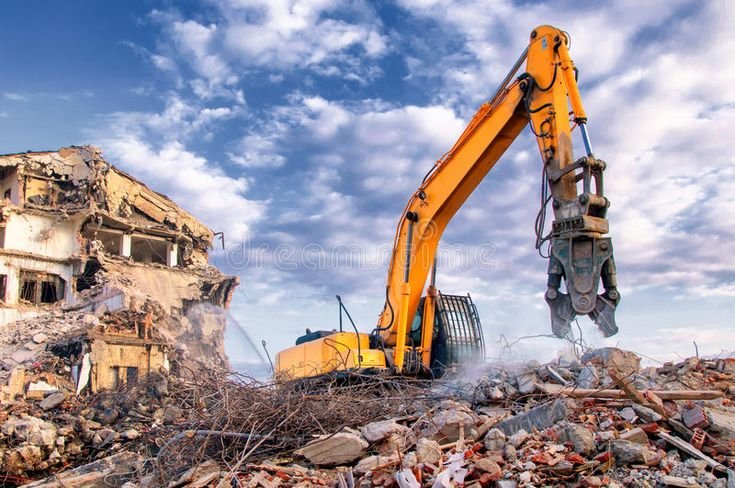Demolition is the process of tearing down buildings or structures, either manually or mechanically, to remove them from a site. It's distinct from deconstruction, which involves carefully dismantling a building to salvage materials for reuse. Demolition is necessary for various reasons, including urban renewal, clearing unsafe buildings, and making way for new construction.
Demolition work inherently involves high risks, requiring careful planning and implementation of safety measures. A comprehensive approach to safety and risk management in demolition includes risk assessment, developing a detailed demolition methodology, implementing appropriate safety measures, managing waste disposal, and ensuring effective communication and teamwork.
Demolition planning involves creating a detailed plan that outlines the sequence, equipment, and safety procedures for tearing down a structure. Site preparation, a crucial step before demolition, includes tasks like clearing the site, disconnecting utilities, and ensuring safety.
Demolition involves safely and efficiently tearing down structures, using various techniques including manual, mechanical, explosive, and selective methods. These methods range from simple hand tools to complex machinery and explosives, each suited for different project needs and conditions.
Handling hazardous materials requires specific procedures to ensure the safety of individuals and the environment. This includes using proper personal protective equipment (PPE), adhering to storage and labeling guidelines, and understanding emergency procedures. Proper training on these procedures is also essential.
Waste management and environmental considerations are crucial for maintaining a healthy planet and ensuring human well-being. Improper waste disposal can lead to severe environmental problems like air, water, and soil pollution, as well as threats to public health. Effective waste management practices, including source reduction, reuse, recycling, and proper disposal, are essential for mitigating these impacts.
Equipment Operation & Maintenance (O&M) encompasses all activities related to keeping equipment and facilities functioning effectively and reliably throughout their lifecycle. This includes the day-to-day operation of the asset and the systematic care and upkeep needed to prevent deterioration and ensure reliable performance. O&M aims to extend the lifespan of equipment, reduce downtime, and minimize costs.
Practical training is a form of education or instruction that emphasizes hands-on experience and the application of knowledge in real-world settings. Assessments in this context evaluate the learner's ability to perform practical tasks, apply learned skills, and demonstrate understanding through practical demonstrations.





